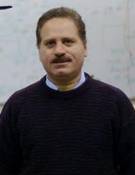
Dr. Farshad Khorrami
Farshad Khorrami received his Bachelors degrees in Mathematics and Electrical Engineering in 1982 and 1984 respectively from The Ohio State University (OSU). He also received his Master's degree in Mathematics and Ph.D. in Electrical Engineering in 1984 and 1988 from OSU. Dr. Khorrami is a professor of ECE Department at Polytechnic Institute of NYU and the Director of the Control/Robotics Research Laboratory. His research interests include adaptive and nonlinear controls, large-scale systems and decentralized control, smart grid, robotics and automation, unmanned vehicles, and microprocessor based control and instrumentation. Prof. Khorrami has published more than 200 refereed journal and conference papers. His book on "modeling and adaptive nonlinear control of electric motors" was published by Springer Verlag in 2003. He also has twelve U.S. patents on novel smart micro-positioners and actuators, control systems, and wireless sensors and actuator and has served as general chair and conference organizing committee member of several international conferences.
Adaptive fault-tolerant control for smart grid application
The design of decentralized and robust adaptive control algorithms for various control problems arising in smart grid applications are addressed and evaluated via simulation studies. The next-generation smart power grid architecture is based on the concept of smart microgrids that incorporate local clusters of loads, renewable energy sources, and storage units, and operate as single controllable systems. The robust, reliable, and efficient control of the smart grid system involves multiple facets including control of the individual renewable energy elements, the invertors and power electronics, storage systems, and grid integration and interaction issues with the power grid including switching between island and connected modes. The control objectives include stability and efficiency under high transient disturbances, control of real power and reactive power, efficient load scheduling, voltage regulation with low steady state error, control of high frequency and transient phenomena, reduction of total harmonic distortion, and fast transient response under load disturbances.